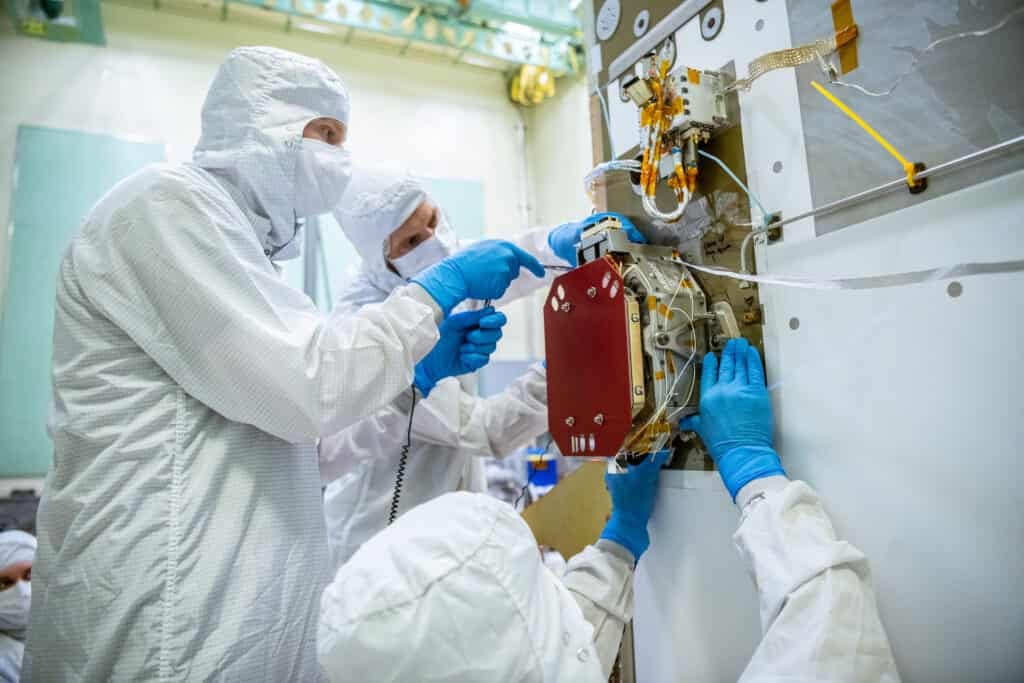
For some forty years, the Netherlands has been leading worldwide in climate monitoring from space. The TANGO satellites given the green light by ESA measure greenhouse gas emissions at the source level from power plants, coal-fired power stations, garbage dumps, and factories, for example. The satellite mission can zoom in on places flagged as “interesting” by other satellites, a magnifying glass. TANGO then measures the exact emissions, TNO writes in a press release. “TANGO measures greenhouse gases at the scale of a block of houses, allowing us to determine emissions from ten thousand sources such as power plants and factories each year,” said Jochen Landgraf of SRON, which has scientific leadership together with KNMI.
TANGO’s Dutch predecessor – TROPOMI – has been tracking the greenhouse gas methane worldwide since 2017 and can image five percent of emission sources. With the successor TANGO, that will be about 75 percent. In addition, TANGO will measure emissions of CO₂, the gas that accounts for the most significant greenhouse gas emissions worldwide.
Why this is important:
The European Space Agency (ESA) has decided to use a Dutch satellite system. This decision highlights Dutch technological expertise in space and can contribute to further innovation and cooperation.
Verification
The accurate emissions data provided by TANGO help governments, scientists, and companies verify declared emissions. This allows them to verify compliance with climate and environmental regulations of, for example, power plants, oil and gas installations, and landfills and to take targeted measures to reduce emissions. There is often a big difference between paper and actual emissions, as was shown, for example, when TROPOMI determined in 2021 that emissions from Australian coal mines were many times greater than expected.
Anton Leemhuis, director of earth observation at TNO: “We want to contribute to transparent and honest verification of greenhouse gas emissions at source level. We are making this possible with the design and construction of the measuring instruments flying in TANGO and by creating an emissions atlas. With this, we are taking the next step toward independent emissions monitoring.”

A focused look
TANGO (Twin Anthropogenic Greenhouse Gas Observers) consists of two satellites flying in tandem. It will be a unique European measurement system that will determine methane, carbon dioxide, and nitrogen dioxide emissions for individual industrial facilities. This system flies in a spatial resolution of about 300 by 300 meters. It is possible to point the satellites directly at detected sources of greenhouse gas emissions several times a week to measure them accurately. Besides that, it will also allow trends, such as geographic distribution, variations of emissions, and the effect of mitigation measures, to be determined.
Dutch investments pay off.
Jasper van Loon of the Netherlands Space Office has spent the past two years negotiating with the other ESA member states, leading to this final mission selection. “It is an important milestone that we have set today in Paris. Europe will have a super accurate climate camera from 2027, developed in the Netherlands.” TANGO was made possible because the Ministries of Economic Affairs & Climate and Education, Culture, and Science invested additional money in the European Space Agency’s Earth Observation Program in 2022 to enable applications in the field of emissions monitoring. The mission fits well with the recently presented long-term space agenda for the Netherlands, in which the climate challenge and social issues are prominent.
Science as a service
The TANGO mission is expected to be launched in early 2027. ISISPACE is the company developing the satellite platforms for the mission and will carry out the mission’s day-to-day operations. Jeroen Rotteveel, CEO: “With TANGO, our company will provide scientific data as a service to ESA, with Dutch instrumentation on Dutch satellites. In this innovative way, also gaining popularity in the U.S., Dutch companies, knowledge institutions, and the government can substantially contribute to the climate challenge through a satellite mission.”

